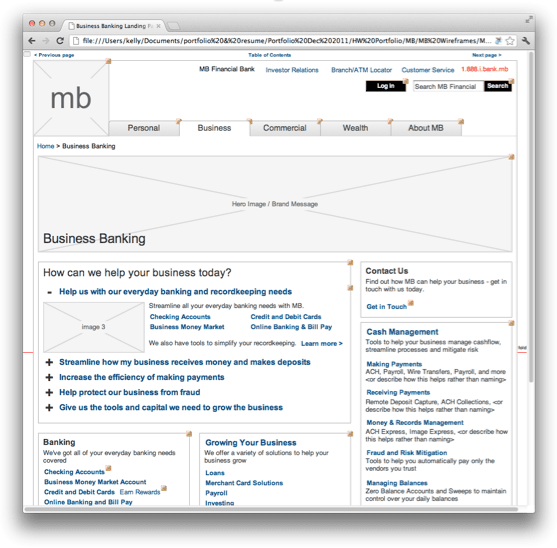
User testing sounds fancy. It sounds like white lab coats, checklists, two-way mirrors, and boringness. Plus, it has nothing to do with marketers; it’s for our UX and Design teams to worry about, right?
But, really, user testing is the exact opposite — it has EVERYTHING to do with marketers. User testing is not about boringness or lab coats, it’s about putting a computer in front of real people and learning from what they do.
Strip away all of the fanciness, and it’s a surefire way to make more money and delight our customers. That has marketing written all over it.
But, the proof is in the pudding, so here are three ways that you as a marketer can benefit from user testing:
1) Find Out What People Do Before They Visit Your Landing Page
Analytics tell you all about someone once they’re on your landing page, but what about everything they do before they arrive? Out of all of the possible sites, why did they choose yours?
If you can have a deeper understanding of WHY people are coming to you, then you can use that information to give your visitors an even better experience.
An example about Hawaii
Imagine you’re in charge of the marketing for a hotel in Hawaii and you want to know what people do before they get to your landing page. Recruit some people to, “start at Google and find a warm place to vacation.”
Yup, that’s it.
Don’t mention the name of your hotel. Don’t even mention where to vacation.
Instead, just watch them go through the process and take note of what they do.
- What appeals to them?
- What type of information are they looking for?
- Is there particular ad copy that catches their attention?
- What ads do they click on? Why?
- What do they think of the landing pages?
- Do they head over to Yelp, Hotels.com, or some other site?
Get a little more specific
After you’ve run these very broad tests, start to give users a little more information. Recruit some people to, “search like you normally would to find a hotel to stay at in Hawaii from August 10th through August 13th.”
This will allow you to see very specifically how they interact with the search results. You’ll be able to know what’s going on inside their head as they look for a hotel. Then, the best part is, you can see what they do when they click through on the results.
- What do they like about the landing page? What do they dislike?
- Do they bounce right away? Why?
- Is there one thing that immediately turns them away?
- Why do they eventually decide to stay where they do?
If you can find 5-10 people to do this type of test then you will have BOATLOADS of great information that you can use to inform your strategy, improve your landing pages, and make more money.

2) Learn From Similar Landing Pages
Often times you can learn just as much (or more) from watching people use landing pages that you’re not responsible for. You’ll generally be less defensive, and more open to some great feedback.
An example about an ebook
Imagine you’ve just built a new landing page that lets people download an ebook about improving conversion rates. Rather than seek out feedback on your own page, find people to visit other landing pages that offer a similar ebook. Get their feedback on those pages and then take that learning and apply it to your own site.
Maybe you’ll discover that people are reluctant to download the book unless they can read a sample. Or, that people are generally okay with providing their email address, but are reluctant to fill out the other sections of the form like “company size” or “phone number”.
Take it a step further
Now that you’ve tested a few landings pages that offer a similar ebook, it’s time to add your own landing page into the mix.
Here’s what you do: ask a few people in your target market to visit your landing page, and two of your competitors’ landing pages.
Ask them what they like and dislike about each landing page. Which one would they actually download the ebook from? Why? Which one was their least favorite? Why?
(Psst. Don’t let them know which page is yours. It will bias the feedback.)
Comparing & testing your landing page to your competitors will give you some ideas that you can implement right away to boost your conversion rate. Plus, it will give you ideas that you can use down the road for A/B tests.
**Note: Please don’t read this section as, “See what your competition is doing and copy them.” The big takeaway ought to be, “See what your competition is doing so you can learn from them and generate test ideas”

3) Start With Wireframes
Next time you’re going to create a new landing page, don’t wait until it’s designed and developed to get it in front of real people. Instead, save your company time and money by testing the wireframes.

Start testing as soon as you have wireframes
By testing your wireframes you can iterate quickly before involving anyone else in your organization. Create your wireframe in minutes with a tool like Balsamiq (or, heck, you can even draw it on a napkin) and then get it in front of people. Watch them interact with your wireframe, and ask them things like:
- What do you think this page is about?
- What can you do here?
- What would you do first?
- What would you expect to happen if you clicked there?
- What benefits will you receive from this page?
- If you had a magic wand, how would you improve this page?
- Is there any information on this page that you think is missing?
Listen to all of their thoughts, change your design if necessary, and then get it in front of more people. By the end of the day you’ll have a page that is ridiculously better than the one you started with.
Now you can hand off this wireframe to your design team and have the best possible chance at a high-converting page.
The Tip of the Iceberg
Don’t be limited by these three outside-of-the-box ideas because they’re just the tip of the iceberg. Test your PPC ads, blog posts, emails and anything else that you can think of to get helpful feedback.
The more we can learn from real people, the better our sites and products will be, and the more money we’ll be able to make.
